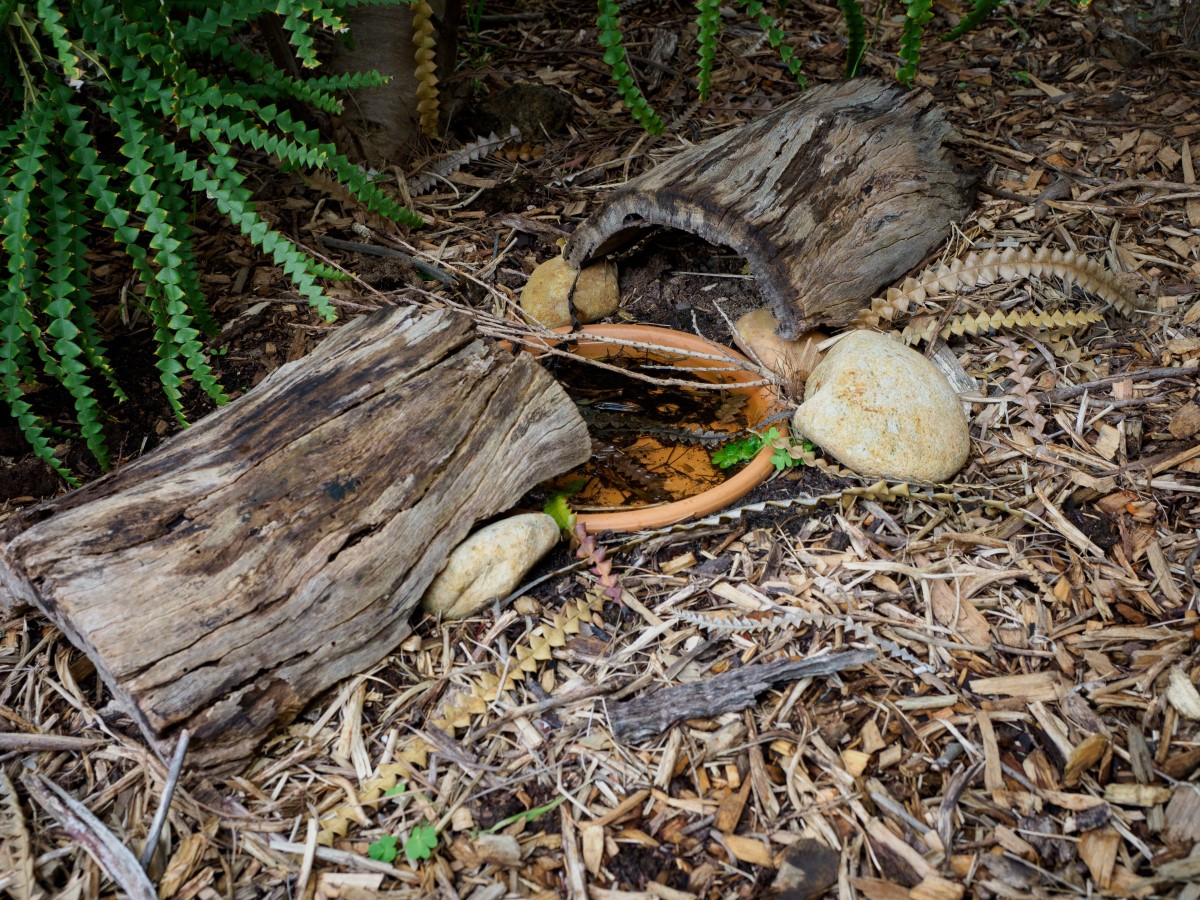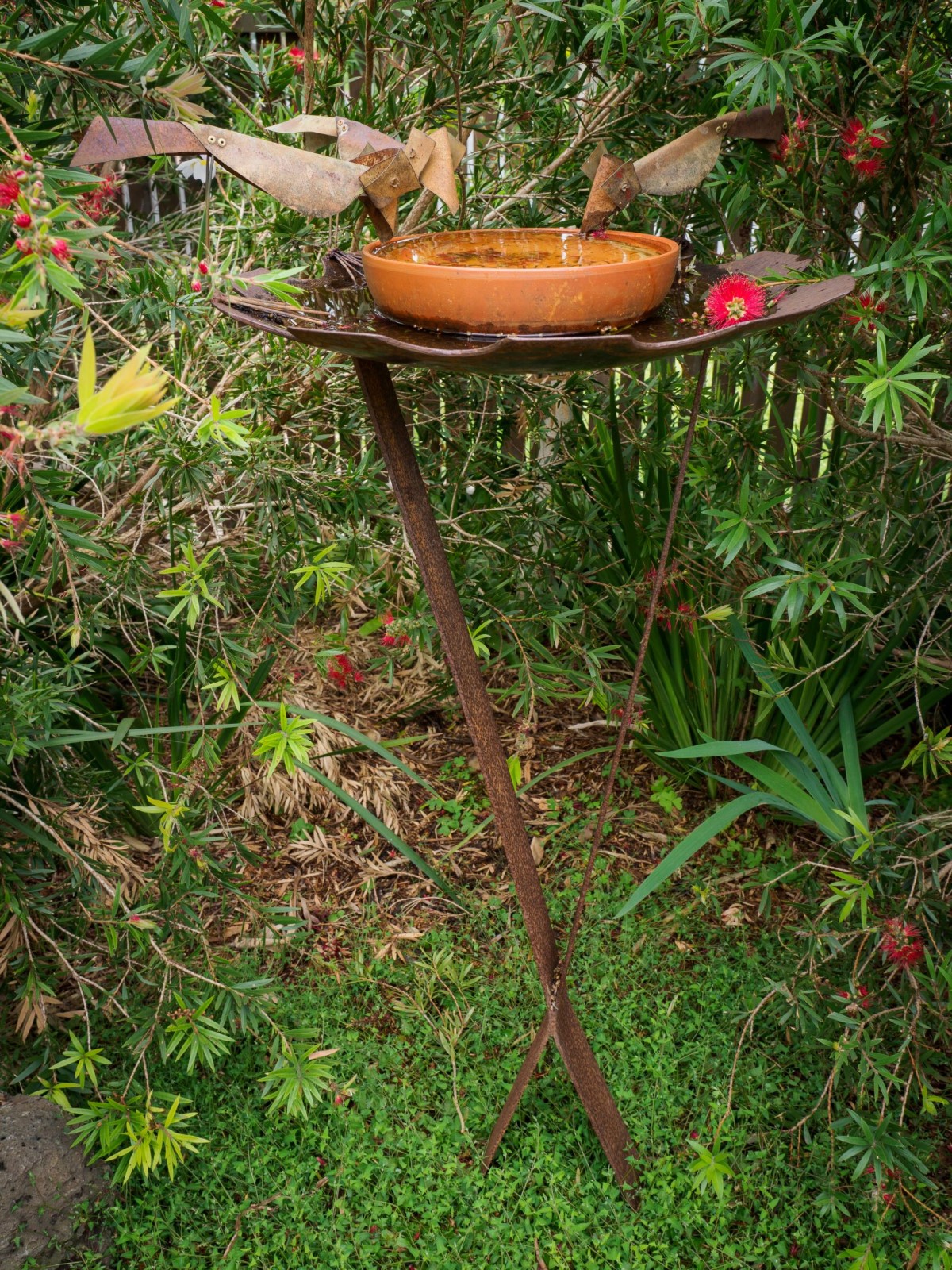
Water sources, including a cat-safe birdbath

Robyn Curtis
Sandra’s love of birds was nurtured by her father when she was in primary school. It is an interest that has followed her through the various phases of her life. It meant that when she came to her new garden in Point Lonsdale, she not only had her furniture transported, she also brought one of her bird baths. She had enjoyed many hours of watching the antics and daily routines of different birds of various sizes using water sources on her rural property.
Sandra now has four water sources in the front yard of her small block.
‘The water sources each have different purposes’, she explained. ‘The smallest one at ground level is for skinks and lizards, so it is shallow and quite protected under a banksia. The largest is a quaint tall garden feature, standing over 1.5m and set in a bottlebrush thicket. It is ideal for small birds. This offers them both height protection from cats and canopy protection from larger birds. I also have a deep, ground-level ceramic bowl in a cool and more open part of the garden for larger birds. It is used daily by a family of resident Red Wattlebirds. Their bathing antics have amused visitors as they dive in, wing pivot and land back on the same side they entered from!’
The fourth water source is also located within shrub protection, and Sandra is keen to point out that as well as size considerations, the advantages of using of ceramic pottery to keep the water cool.
‘All I have to do is make sure the water is fresh,’ she said, ‘then the birds, bees and a range of other insects will enjoy it.’
Did you know that cats can catch lizards, small birds and small mammals every day unless kept inside or in a cat run? The Borough of Queenscliffe has a cat curfew to protect native wildlife.

Robyn Curtis

